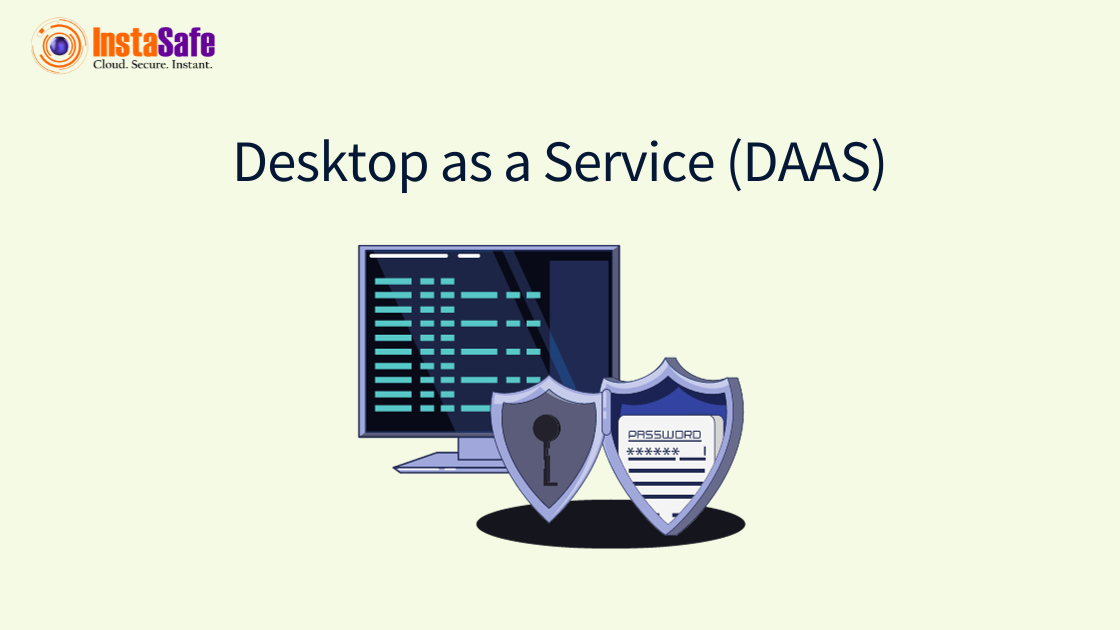Desktop as a Service (DAAS)

Desktop as a Service (DAAS), a prominent facet of Virtual Desktop Infrastructure (VDI), emerges as a transformative approach to delivering computing resources. This article explores the fundamental aspects of Desktop as a Service, shedding light on its capabilities and the profound impact it brings to organizations seeking agile, scalable, and efficient desktop solutions.
What is Desktop as a Service (DAAS)?
Desktop as a Service (DAAS) is a cloud computing solution that delivers virtualized desktops and applications to end-users over the internet. In this model, the desktop environment is hosted and managed by a third-party cloud service provider, eliminating the need for organizations to maintain and support physical desktop infrastructure. DAAS provides a flexible, scalable, and secure approach to desktop delivery, catering to the evolving needs of modern businesses.
Key Features and Capabilities:
1. Cloud-Based Desktop Delivery:
- Hosts desktop environments and applications in the cloud.
- Enables users to access their desktops from any device with an internet connection.
2. Scalability and Flexibility:
- Allows organizations to scale resources up or down based on demand.
- Adapts to changing workforce sizes and dynamic business requirements.
3. Resource Optimization:
- Optimizes resource utilization by centralizing desktop management in the cloud.
- Minimizes hardware and infrastructure costs.
4. Universal Access:
- Provides users with the flexibility to access their desktops from various devices, including laptops, tablets, and smartphones.
- Promotes a mobile and remote work-friendly environment.
5. Automated Updates and Patch Management:
- Streamlines the process of updates, patches, and software deployments.
- Ensures that all desktop instances are consistently up-to-date.
6. Cost-Efficiency:
- Shifts the desktop infrastructure to a subscription-based model, reducing upfront capital expenses.
- Offers predictable and transparent pricing based on usage.
7. Enhanced Security Measures:
- Leverages robust security protocols to safeguard data and user access.
- Implements encryption, access controls, and multi-factor authentication for enhanced security.
Advantages of Desktop as a Service (DAAS):
1. Improved Disaster Recovery:
- Simplifies disaster recovery planning by centralizing desktop images and data.
- Enhances data resilience and business continuity.
2. Rapid Deployment:
- Accelerates the deployment of new desktop instances.
- Enables organizations to provision desktops for new employees swiftly.
3. Simplified IT Administration:
- Shifts the responsibility of infrastructure maintenance to the DAAS provider.
- Allows IT teams to focus on strategic initiatives rather than routine maintenance.
4. Device Agnosticism:
- Users can access their desktops from a variety of devices without compromising performance.
- Facilitates device agnosticism, accommodating diverse user preferences.
5. Global Accessibility:
- Provides a consistent desktop experience to users globally.
- Overcomes geographical limitations, fostering collaboration in distributed teams.
Implementing Desktop as a Service (DAAS) - Best Practices:
1. Comprehensive Needs Assessment:
- Conducts a thorough assessment of organizational needs, including user requirements and performance expectations.
- Identifies the most suitable DAAS solution based on business objectives.
2. Security and Compliance Considerations:
- Evaluates the security features and compliance certifications of the chosen DAAS provider.
- Ensures alignment with organizational security policies and regulatory requirements.
3. User Training and Onboarding:
- Provides comprehensive training for end-users on accessing and utilizing the DAAS environment.
- Streamlines the onboarding process to ensure a smooth transition.
Conclusion:
Desktop as a Service (DAAS) represents a paradigm shift in desktop computing, offering organizations the agility, scalability, and efficiency needed to thrive in the digital era. By leveraging the cloud for desktop delivery, businesses can embrace a future-proof approach to managing desktop infrastructure. Whether optimizing costs, enhancing security, or facilitating remote work, DAAS emerges as a versatile solution that empowers organizations to elevate their workspace experience.
